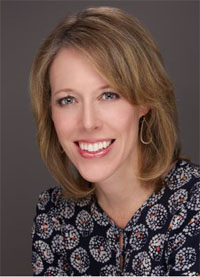 Part 2 – Embedding MU in Daily Operations
Part 2 – Embedding MU in Daily Operations
By Beth Houck, VP of Client Services, SA Ignite
In this article series, I explain how two different organizations tackled MU from different starting points, both with successful outcomes.
Early in our company’s start, we benefited from watching how one organization embedded their Meaningful Use (MU) program into the fabric of their organization from the program’s infancy, back in 2011. As its MU program evolved, this organization similarly had to tweak how it managed this IT-led initiative. In spite of these changes, staff turnover and other competing priorities, this organization continues to exceed its goal of maintaining 90 percent compliance for more than 300 providers. Looking to 2014, they are now readying themselves to successfully meet Stage 2 requirements in the first quarter.
I’d like to reflect on some of the key management strategies that made their MU program a success.
Create an IT-led but not IT-owned MU program
One of the challenges that I’ve seen with an IT-led MU program is that stakeholders (providers and practice managers) sometimes relinquish responsibility for the measures. This hand off can sometimes create a culture where meeting MU goals is considered an information technology hurdle, rather than a clinical requirement. They confronted this challenge immediately by demonstrating true ownership of the Meaningful Use program. Project managers came from the IT department and application analysts supported training on new MU workflows, but the responsibility of meeting MU goals was shared across the organization.
Specifically, they utilized a strong IT analyst team to stay up-to-date on changes to the regulations and their impact on the application. This core team was supported by colleagues who understood operations and credentialing and were responsible for duties related to day-to-day monitoring of providers and attestation.
Facilitate Hand-offs
The MU program touches many different unexpected departments in an organization, from on-boarding a new physician to evaluating the financial impact based on a variety of scenarios. At the same time, it is difficult for one person to know everything about the program, monitor provider behavior, collect a comprehensive audit trail and attest correctly. This organization facilitated hand-offs seamlessly, ensuring that many, many people knew at least small parts of the entire MU story.
For example, one person is solely responsible for on-boarding new physicians. This ensures: 1) that the physician agreement allows them to attest in this payment year; 2) that they have given proxy access to the appropriate person; and 3) that their name, NPI and provider demographics have been entered into their MU monitoring system correctly. Once this step is completed, their responsibility ends. What this means, however, is that when the group of people that are responsible for monitoring providers are looking at their list, they know that they are spending time on the correct group and that they’re monitoring them in the correct program and payment year.
Many hands make light work
The result of this seamless hand-offs approach means that no one person is responsible for too great a part of the MU puzzle. Shared responsibility is critical to a program that has such complex idiosyncrasies depending on when a provider joins the program, which EHR they’re using and/or the organizational structure. It’s both risky and nearly impossible to rely too much on a single person to understand each moving part.
By having a number of people responsible for their own specialty of expertise, program leaders are able to learn from a deeper understanding of the MU program and strengthen the broader knowledge for the organization. This in turn, means less MU burn-out, much less exposure for the organization with employee turnover or employee absences and, importantly, a more detailed audit trail.
They structured their MU program so they had several different people responsible for ensuring that each of the Yes/No measures were met. They also had a single team focusing on the security risk audit, a few application analysts building the audit trail evidence for the Clinical Decision Support rule and for the Drug-Allergy check and yet another group testing the public health measures. They also had a centralized team reviewing the documentation to expand the robust nature of their audit trail.
It is clear that not all organizations have the structure, leadership and culture to work with this level of teamwork. Additionally, an organization needs authority and accountability to effectively implement a MU project plan that distributes responsibility. That said, the downstream benefits are so great — for all types of projects — that I would suggest it’s worth the effort.
In my next article, I’ll explain how another organization successfully tackled MU from the Clinical Quality/Operations area and how and why their approach was successful.
About the author – Beth Houck, MBA is the Vice President of Client Services for SA Ignite. She has 17 years of healthcare analytics, operations and sales experience. She has led strategy and business development for Northwestern Memorial Healthcare and the Rehabilitation Institute of Chicago. Beth earned a B.S. in Industrial Engineering from Northwestern University and an M.B.A. from the Fuqua School of Business at Duke University.
